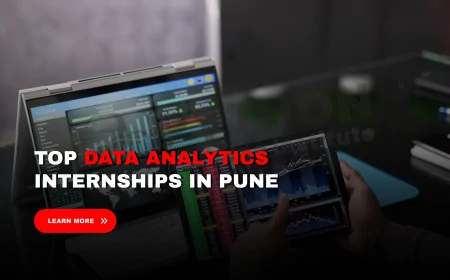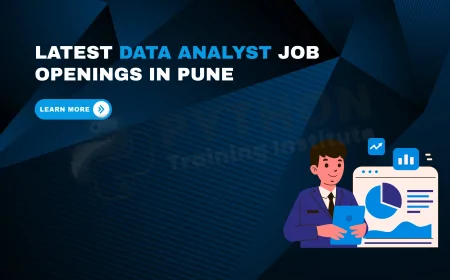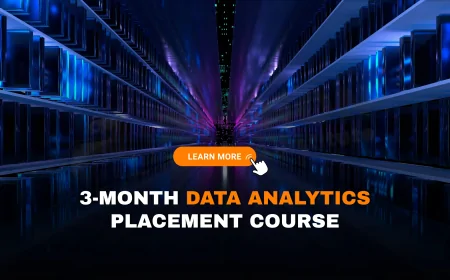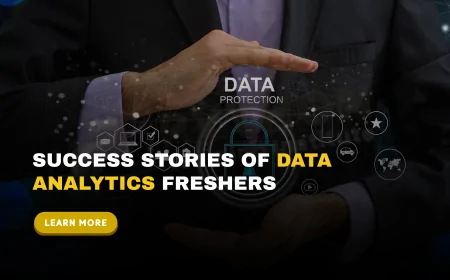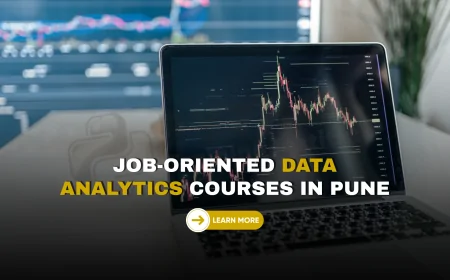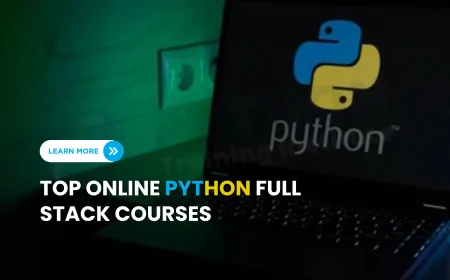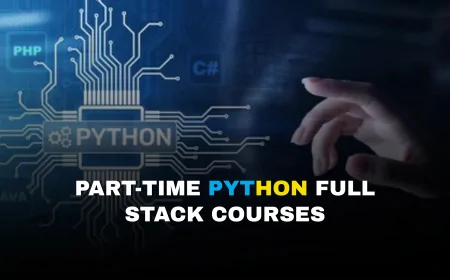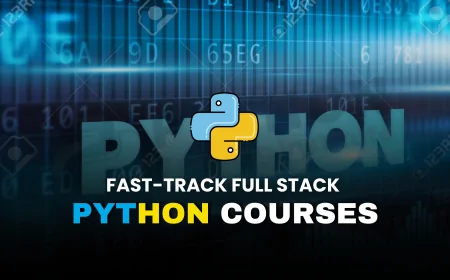How to Ace the HR Round for Data Analyst Roles | HR Interview Tips for Aspiring Data Analysts
Master the HR interview round for data analyst roles with expert tips, behavioral questions, STAR method answers, and communication strategies.

Table of Contents
- Introduction
- Understanding the HR Round
- Pre‑Interview Preparation
- Common HR Questions for Data Analysts
- Using STAR & Behavioral Frameworks
- Effective Communication Tips
- Showcasing Impact & Storytelling
- Demonstrating Culture Fit & Values
- Smart Questions to Ask HR
- Common HR Round Pitfalls
- FAQs
- Conclusion
Introduction
The Human Resources (HR) round in data analyst interviews is not about SQL commands or regression equations — it’s about assessing your fit, communication skills, and motivation. While technical rounds evaluate your analytical prowess, the HR round confirms whether you’ll thrive in the company's culture and adequately convey your value. This guide will help you prepare effectively and ace the HR round for data analyst roles.
Understanding the HR Round
The HR interview evaluates soft skills, alignment with company values, behavioral traits, and your motivation. HR assesses:
- Why you want the role
- How you handle challenges
- Whether your goals match company expectations
- How you communicate insights clearly
Pre‑Interview Preparation
Thorough preparation can help you make a great first impression. Key steps include:
- Research the company, its mission, values, and recent news
- Learn basics about their HR/data analytics tools if possible (e.g. PowerBI, Workday, SAP)
- Review your resume—be ready to explain projects, transitions, and gaps
- Prepare examples of initiatives where you created data dashboards, cleaned data, or added business insights
Common HR Questions for Data Analysts
Frequently asked questions include:
- Tell me about yourself and your background
- Why data analytics and why this company?
- Describe a time you dealt with conflicting priorities
- How do you handle feedback or criticism?
- What are your strengths and weaknesses?
- Behavioral: Tell me about a time you communicated complex data to non-technical stakeholders
HR is also interested in your motivations, long-term goals, and alignment with the role.
Using STAR & Behavioral Frameworks
Answer behavioral questions using the STAR method (Situation, Task, Action, Result) to structure your responses clearly and impactfully.
Example: “Tell me about a time you improved a process”—explain situation, what you needed to do, how you acted, and outcome.
Effective Communication Tips
- Explain insights in simple terms, avoiding jargon
- Use analogies where helpful to illustrate complex findings
- Keep responses to 1–2 minutes, staying concise yet complete
- Speak with confidence, clarity, and tone modulation—even when nervous
Practice explaining a technical project to someone without analytics experience.
Showcasing Impact & Storytelling
Always link what you did to measurable outcomes — saved hours, improved sales, reduced turnover, etc. Use quantifiable results when possible.
Focus on real business impact, not only processes. For example, describe how a dashboard helped leadership make faster decisions or detect retention issues.
Demonstrating Culture Fit & Values
Understand the company’s culture and express how your working style aligns. For instance, if they value collaboration, share examples where you worked cross-functionally. Highlight adaptability, communication, and alignment with business goals.
Smart Questions to Ask HR
Asking thoughtful questions shows engagement and insight. Examples:
- What does success look like in the role in the first 90 days?
- How does data analytics contribute to the broader HR or business strategy?
- What tools or mentorship will I have access to?
Customizing questions based on your research signals preparedness.
Common HR Round Pitfalls
- Using vague or generic answers with no real examples
- Talking only about technical expertise without soft skills
- Undershooting achievements—don’t downplay measurable results
- Failing to ask any questions at the end — lost engagement opportunity
Frequently Asked Questions (FAQs)
1. How should I introduce myself in the HR round?
Give a concise summary of your journey, why you transitioned into analytics, and your excitement about the role — in under 2 minutes.
2. What is the STAR method?
STAR stands for Situation, Task, Action, and Result—a structured way to describe behavioral examples clearly.
3. How do I handle a gap in my resume?
Briefly explain what you were doing (like learning analytics or upskilling), then pivot to how it prepared you for data roles.
4. Should I mention the company’s recent news in my answers?
Yes! Briefly referencing it in your answer shows genuine interest and research.
5. How detailed should my project explanations be?
Provide enough detail to convey your role, tools used, and results—but avoid overly technical depth in HR round.
6. What soft skills matter most in this round?
Communication, adaptability, collaboration, and clarity in explaining complex information simply.
7. How do I respond to salary expectation questions?
Research typical ranges, provide a reasonable expectation, and express flexibility based on the role and growth opportunity.
8. Can I talk about personal projects?
Yes, especially if they align with business use cases and show initiative and impact.
9. How do I answer “Why should we hire you?”
Summarize your analytical strengths, business mindset, communication skills, and alignment with company goals.
10. What if I don’t have HR analytics experience?
Pivot to transferable skills: data dashboards, stakeholder communication, survey or engagement analysis projects.
11. Is it okay to ask for feedback on my performance?
Yes—phrased positively, like “I’d appreciate any feedback you can share that might help me grow.”
12. How do I prepare for behavioral questions?
Reflect on past experiences—academic, intern roles, volunteer work—and map them to behavioral competencies using STAR.
13. Should I mention personal weaknesses?
Yes — pick a real weakness and show how you’ve actively improved it (e.g., communication through meetups or practice).
14. How do I answer “Where do you see yourself in 5 years?”
Share a vision aligned with analytics growth—master tools, lead projects, mentor juniors, grow into analytics strategy roles.
15. What if I get stumped by a question?
Ask for clarification, take a breath, and respond thoughtfully. It’s better than blabbering under pressure.
16. How soon should I follow up after the HR round?
Send a concise thank-you email within 24 hours reiterating your enthusiasm and one key insight you appreciated.
17. Can I discuss company culture in the HR interview?
Yes! Ask about collaboration, feedback loops, and learning opportunities—they reveal your culture awareness.
18. How do I prepare for questions about teamwork?
Recall examples where you collaborated on analysis or presented findings to teams and include the outcome.
19. Is discussing academic projects OK?
If you lack industry experience, well-structured academic projects can demonstrate analytical and presentation skills.
20. How long should HR round answers be?
Keep answers about 1–2 minutes. Use STAR to stay structured, informative, and concise.
Conclusion
Acing the HR round for data analyst roles is not just about what you know—it’s about how you present it. By preparing structured behavioral responses, communicating complex analysis simply, showing culture fit, and asking intelligent questions, you’ll demonstrate that you’re not just technically capable, but also a good team and strategic fit. With practice, clarity, and authenticity, you can convert this round into an opportunity to shine and move forward in your data analytics career.
What's Your Reaction?
 Like
0
Like
0
 Dislike
0
Dislike
0
 Love
0
Love
0
 Funny
0
Funny
0
 Angry
0
Angry
0
 Sad
0
Sad
0
 Wow
0
Wow
0
